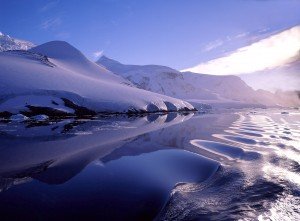Economist Gareth Morgan and his associate Geoff Simmons write about the pitfalls of campaigning for Marine Protected Areas in today’s New Zealand Herald. Dr Morgan recently returned from the Our Far South expedition, which aimed raise New Zealanders’ awareness of the importance of the Antarctica, the subantarctic islands and the Southern Ocean.
 An excerpt (read in full here):
An excerpt (read in full here):
Gareth Morgan and Geoff Simmons: Extreme Green risks Ross Sea own goal
There is a debate raging between fishing and marine protection in the Ross Sea region. Last week we took care of the myths purported by the green-necks, this week we will turn to three of the serious proposals for marine protection. The New Zealand and United States draft proposals protect most of the Ross Sea proper, and the vast majority of the ecosystem features considered important by scientists. Yet the Antarctic Ocean Alliance (AOA, a coalition of environmental NGOs) is calling for more protection. Let’s look at the differences in the draft proposals.
The key issue is one of trade-offs. Creating a Marine Protected Area in international waters is ultimately a diplomatic process, and will inevitably require some horse trading in order to reach consensus among nations. In particular Russia, Korea and China will need persuading, and the best way to do this is through the science.
The New Zealand draft proposal as it stands is based on science, and is the result of an open and transparent process (known as systematic conservation planning) that all key New Zealand partners (including our top scientists, NGOs and the fishing industry) were involved with.
The trade-offs of the New Zealand scenario are clear – fishing will be eliminated from 15-20 per cent of its former range while the ecosystem features that scientists consider to be particularly important and vulnerable to the potential effects of fishing will be 90-100 per cent protected. These are the bits that the AOA rightly point out need to be protected as a “natural laboratory”.
The United States and AOA proposals were not developed through the same systematic process, so the trade-offs between protection and other activities including fishing are murkier.
Under the New Zealand proposal the protection priorities are clearly stated; it is simple to shift the proposed boundaries of the Marine Protected Area and immediately see the impacts on both fishing and the protection of important habitats. By contrast, it is difficult to tell from the AOA proposal which areas they consider most important to protect – would they be willing to give up parts of the Ross Sea itself for some of their additional proposed areas outside the Ross Sea? It is unlikely.